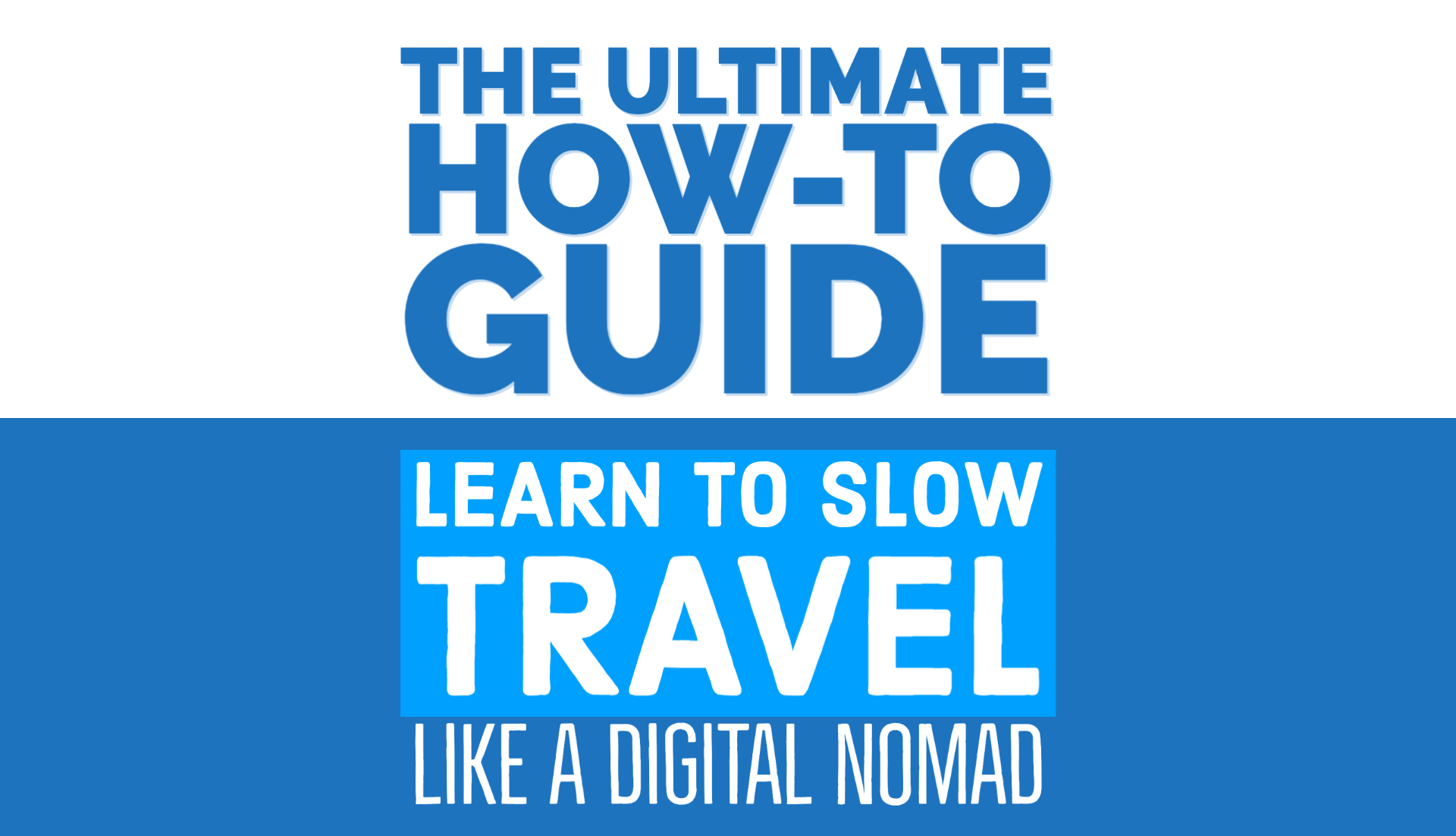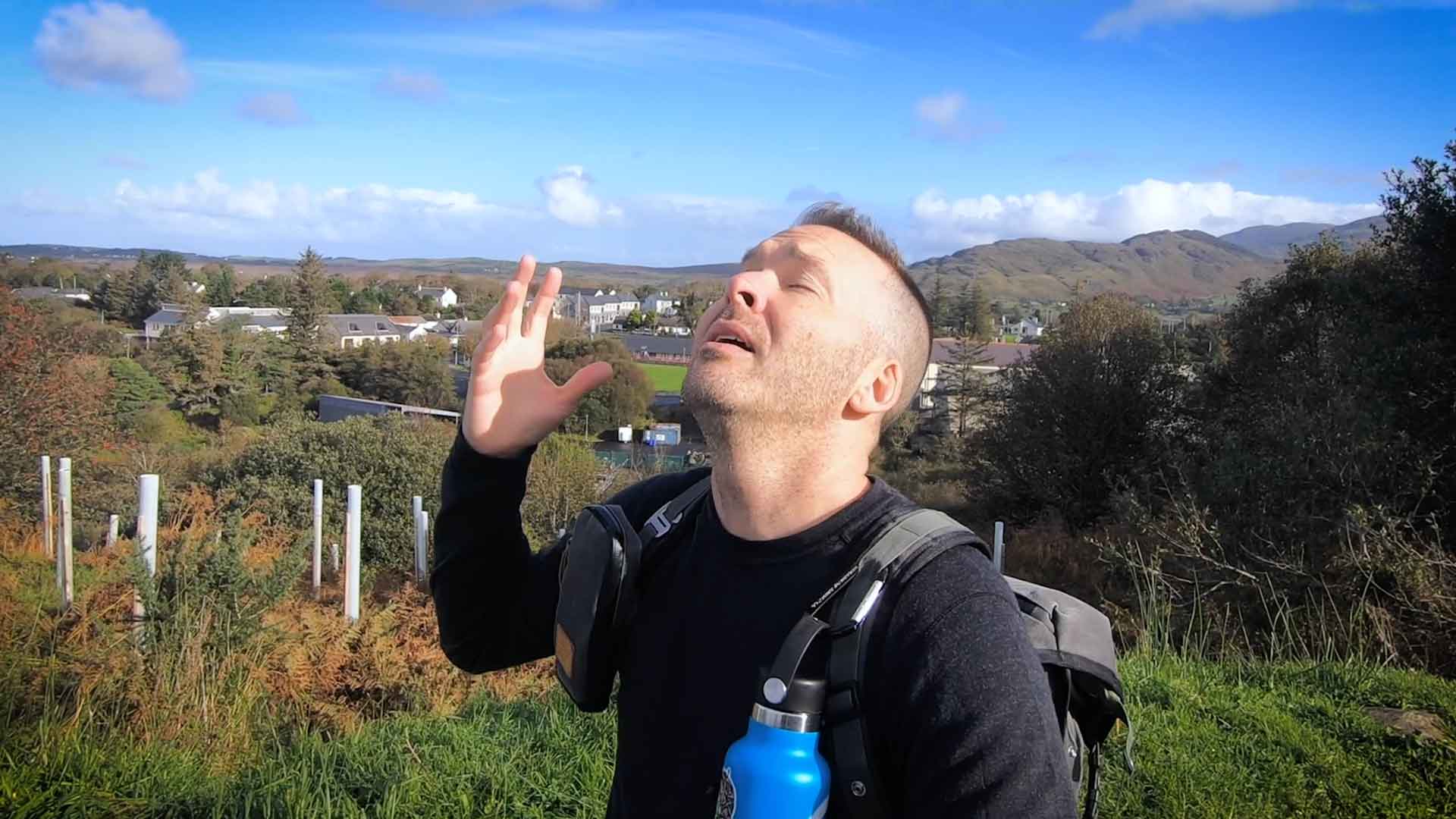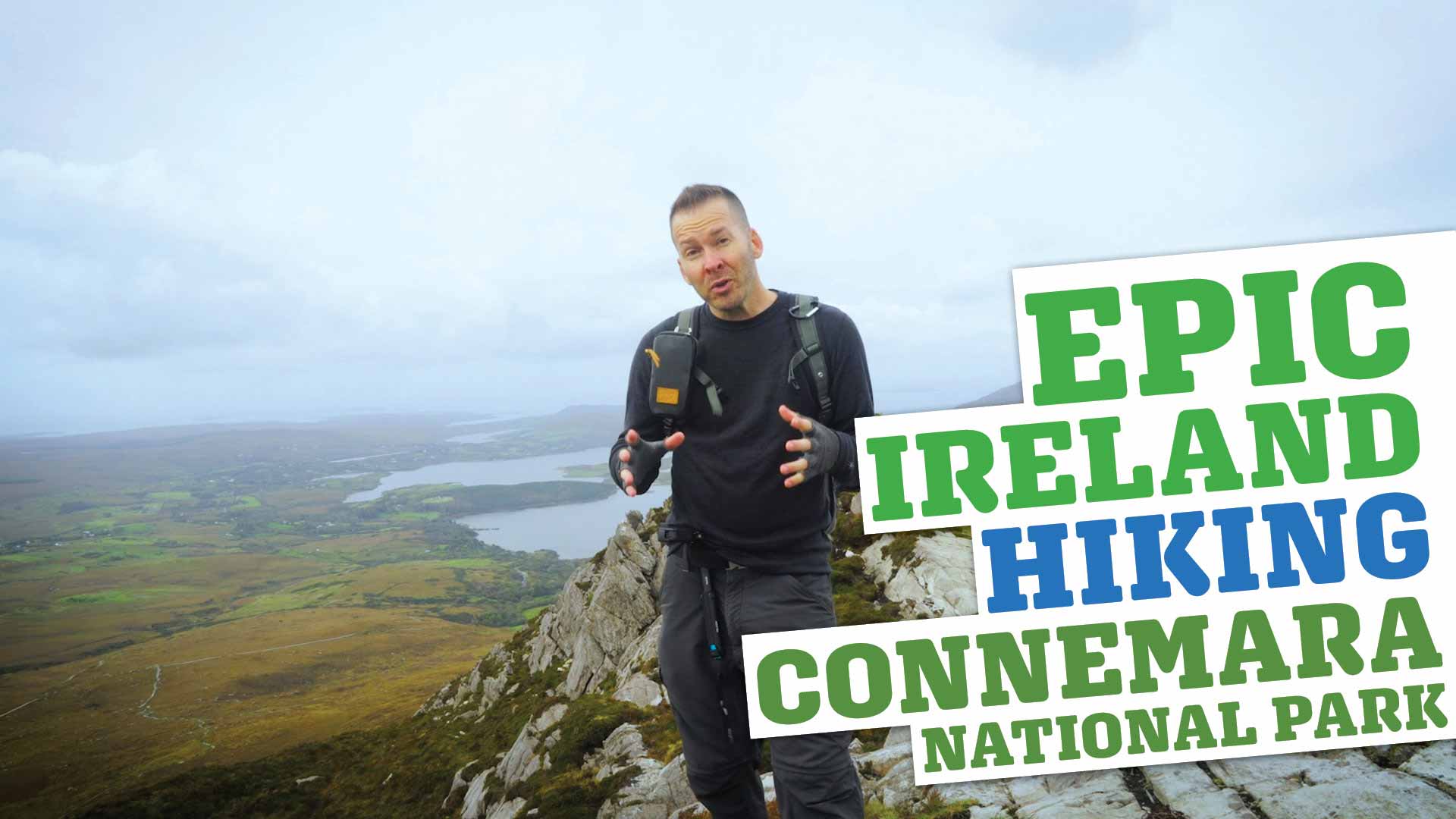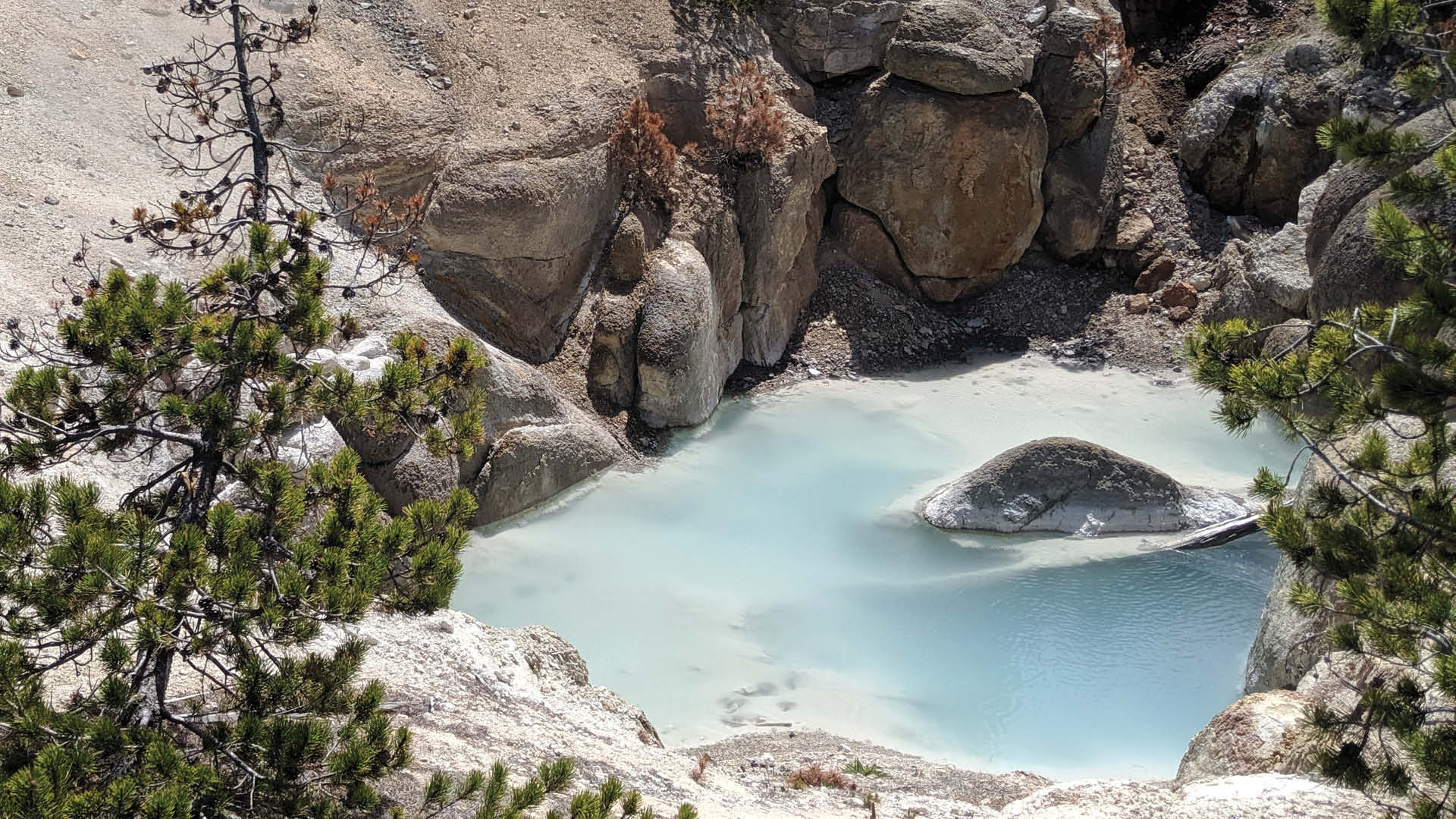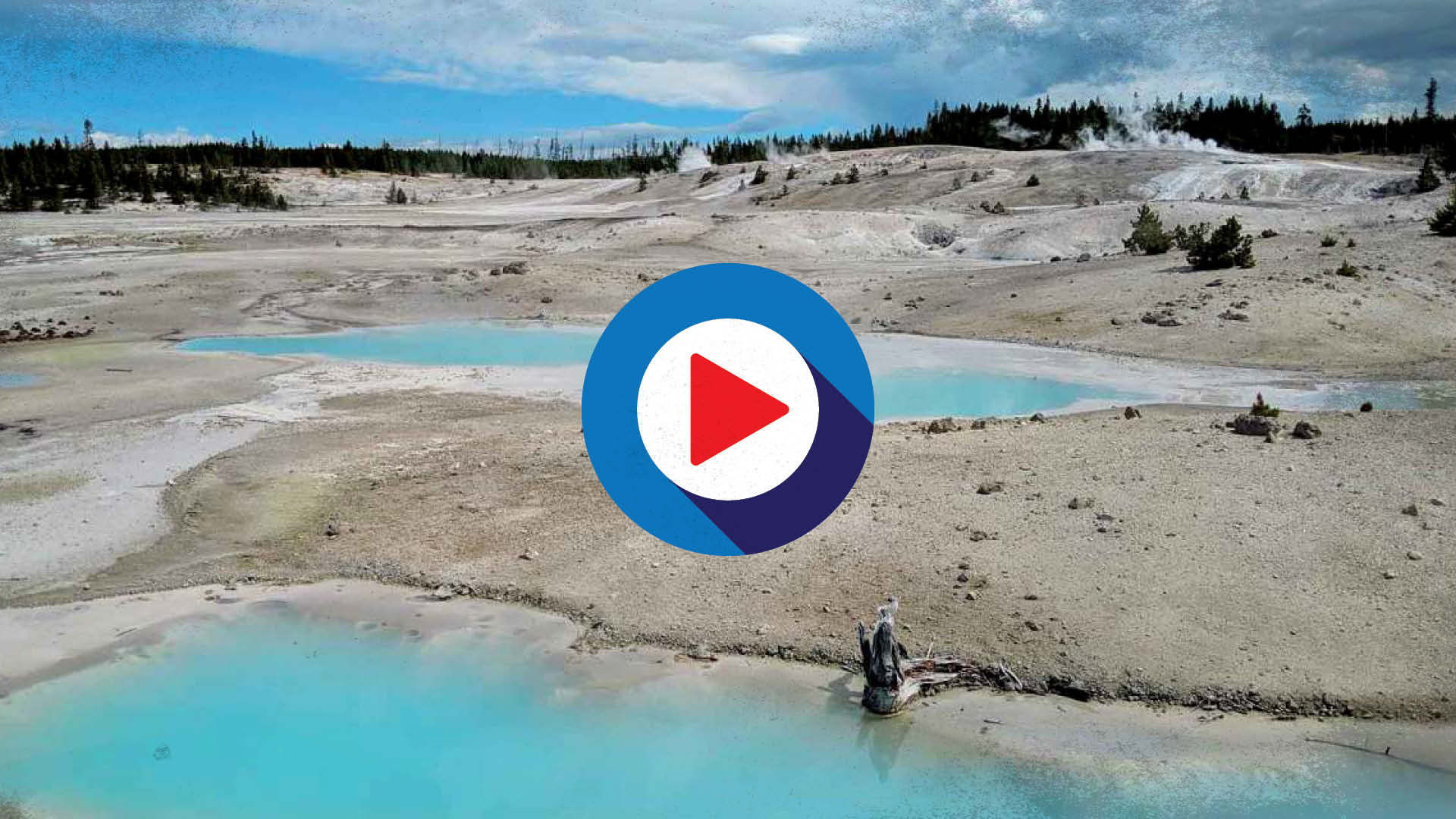The ultimate guide on how to slow travel like a digital nomad!
Well, you clearly have some pent-up wanderlust. But more importantly, you’re interested in learning how to travel differently than you may be used to! Really digging into slow travel is the absolute best shift in mindset and travel habits to achieve longer time away from “home” while spending less! And should you want to be a digital nomad, the concepts are really the same. Once you learn how to master slow travel, you just need to add the “digital” or remote-work parts!
Mastering slow travel is kind of like reprogramming your mind to pretty much relearn anything you’ve been tricked to believe travel “has to be”…like expensive! Slow travel actually tends to make travel much cheaper!
You may already know some of the things I’ll hit you with, but some you may not. Think of the concepts of slow travel or becoming a digital nomad as more like the toolbox. The many ways of achieving or getting more practiced in either are like the tools in the toolbox. I’m just looking for a few of these tips (tools) to catch you sideways so you can take your travel game next level. Or if nothing else, at least plant some seeds and let them take root.
But first…what exactly is slow travel?
Truthfully, I’ve never followed the dollar bills yo. Most people would probably skip calling me frugal and go right to lovely terms of endearment like “cheapass” or “chintzy” or “so tight, that if you stuck a lump of coal in his fist, in 2 weeks it would turn into a diamond.” (If you know where that one’s from, hit me up on facebook with the source and make my day!)
Well, slow travel is actually way cheaper than traditional, vacation-styled travel. The longer you stay in one place, the cheaper it gets as you amortize out the costs. Especially since the cost of flights or getting there is usually one of the largest expenses. So if you have a $600 flight, that flight essentially costs $100/day on a 6-day trip, but only $6/day on a 100 day trip! Oh, and most Airbnb or VRBO listings give you a discount for weekly stays…and an even bigger discount for monthly stays!
But here’s the thing, I never feel like I’m sacrificing my experiences for the sake of saving a dollar. Now you might be wondering how I travel fairly inexpensively and still live it to the fullest? C’mon… I could insert nearly every cliche about money here. But the gist is that it’s not about the money, it’s about the experiences.
And honestly, the best experiences I’ve had were when there was actually very little coin spent.
Some of my favorite cheap, slow travel moments
- I’ve sat on a beach in Mexico at a broken shack for hours enjoying dollar Cervezas while waiting for the absolute best, cheap, fresh fish tacos I’ve ever had. All while enjoying new friends and the owner’s 5 pitbulls milling about.
- I’ve sat on a dock with 8 new friends from 5 different countries and a 24-pack of cheap beer for hours during my first ever hostel trip in the US years ago.
- I’ve skivvy-dipped in the Forsythe Fountain in Savannah, GA USA with 4 people that I had only met hours before.
- I’ve agreed to get in a van with people that I literally just met and ended up getting the royal treatment to some of Mexico’s major tourist attractions as a result.
All of these were hella inexpensive, if not essentially free. And they sit in my mind much higher than most of the expensive beers or lavish hotel rooms I might have enjoyed at other times in my travel past.
Stick with me on some of these tips. Put them in play. Travel slower and cheaper, and maybe start adding to your digital nomad toolbox for later.
Oh. And hit me up and start telling me the new stories that come as a result! Onward my friend!
Your new safe word is “Experiment.”
Rule number 1 for your little journey here. You need to agree to change the way you view the travel and new experiences ahead. I suggest you start thinking of it all as part of one big experiment…with a bunch of little experiments along the way.
Change takes time, and old habits are hard to break. Fear can be a sombich’, nomatter what form it takes. It can hold you back for no true, tangible reason. And you need to do what’s comfortable for you. But I suggest that if you’re definitely looking to take a slow travel approach—cheaper and altogether a bit different than you’ve traveled in the past—that you take a page from my playbook.
See, I had an epiphany a little while back that is literally the reason why this guide even exists and you’re able to be reading my grammatically tortured gibberish.
I realized that once I started viewing every…little…travel…step…that I was taking as an experiment, that it gave me permission and a feeling of freedom that, no matter what, I could live with the outcome. It kind of took fear, in whatever form, and showed it to the door.
Viewing it all as an experiment is kind of your “out” or excuse for those that just don’t get what you’re doing
If you view your first try at staying in a hostel as an experiment, you can take the results, good or bad, and just say “well, that was a good experiment. This worked and that didn’t, and the next time I’ll do this differently.”
When you have trouble with friends and family looking at you sideways because you decide to take a leap and buy a one-way ticket to Mexico, just tell them that it’s an experiment!
Or just when something goes wrong, and it will, whether you’re doing budget travel or typical travel, just say “Well, that experiment backfired!” and move and shift for the next one.
Seriously. You might have to try it to understand what I mean, but it truly is liberating.
Take it from a guy who had no friggin’ clue what he was doing in the beginning! I literally got rid of like 75% of my worldly belongings, fired the majority of my clients, and bought a friggin van!? I not only needed this “experiment” mentality to wade through any conversation with family and friends, but more importantly, I needed it to keep myself sane! So if you’re really just dipping your toes into the deep end of the slow travel life, just give yourself some grace by looking at each uncomfortable step forward as a little experiment!
A note about these “tips”: They aren’t in order…
These tips & tools for slow travel are all important, so feel free to jump around. And since there’s no rush on your experiment to become a slow travel ninja or to become a digital nomad, just pick the low-hanging fruit.
Choose a few steps with the lowest personal resistance for you and put them into practice. Once a couple of them become second nature, apply a couple more, then a couple more.
It took me about 3 years of practice, but once I hit the tipping point there was no turning back! Slow travel is just too good of a life to go back from once you start mastering it!
This site participates in the Amazon Services LLC Associates Program and other affiliate programs and may earn from qualifying purchases. You’re never charged more, but it helps out little by little! Check out “Privacy” in the top menu if you need to know more!
Tip 1: Start thinking…and acting…like a local
Right out of the gates, it helps to start thinking less like you’re a tourist or on vacation and more like a local! A lot of the tips and tricks ahead are very much counter-culture to experiencing things as if you’re on a true vacation.
Ask any long-term slow travel expert or digital nomad and they’ll likely say they haven’t had a “vacation” in way too long! It seems counter-intuitive, but once you flip the switch, slow travel just seems like living in a different place for a while.
Personally, I’ve really stopped viewing my travel as vacations at all. That has a lot to do with the fact that nomatter where I go or when I go, I’m always making time to work while away. It’s how I make this experiment sustainable! Being somewhat location independent means spending more time on the ground in new places, but still getting things done that pay the bills.
Thinking like a vacationing tourist vs thinking like a local — AKA the slow travel mindset:
- Spend Spend Spend! I’m on vacation! vs. Let’s keep this comfortable so I don’t stress about the money…
- I’m not working at all this trip! vs. If I work a little here and there I can make this trip longer…
- I want the fanciest, most expensivest digs this week vs. Let’s stay some place more reasonable, since we’re hoping to be out exploring most of the time anyways…
- Where are we eating for breakfast? Where are we eating for second breakfast? Where are we eating for lunch? Where are we… vs. Let’s get some groceries for our early meals and plan for a bangin’ dinner & drinks out this evening
- How much can we pack in today? vs. Let’s hit a museum or two and catch a sunset or a slow walk in the park…
- Drink! Drink! Drink! …hungover half the next day… vs. Let’s hit a happy hour for a couple drinks so we can function the next day, which means spending less and enjoying more…
- Let’s rent a car or just rideshare/taxi everywhere… vs. We can get get a $30 pass to get us around on the train and bus transport all week…or month…and only rideshare/taxi when we have to…
- I’ll worry about what I spent when I get home vs. I saved up for this, so let’s keep an eye on spending but not be afraid to be spontaneous, within reason…
Again, learning how to slow travel is really just about quite a few mind-shifts. Less is actually more, since just spending your time and money smarter tends to increase the amount of both you’re really able to enjoy! (Here’s a deep dive on that nomad vs. vacation mindset)
Tip 2: Budget, Budget, Budget
I would have put this as number one, but I’m afraid you would have been all “what the hell dude, I didn’t come here for a lesson on my finances” and then promptly bolt!
But here’s the reality of what I’ve learned over the past few years: the only way I’ve been able to enjoy slow travel (read: more travel) and not be stressed out as fuhhhh….is to know my money situation in detail. That means knowing it whether I’m on the road or not.
Do I know every cent of what I’m spending or where it’s going? No. But I do know that I’m spending less than I’m earning, and I do have a reasonably thought-out spending target in mind regardless of where I’m at or what I’m doing.
When I was 28 years old, I realized that I woke up to my reality of being $50k in debt from various “normal” consumber debts like college, vehicles, credit cards., etc.
I actually had this epiphany when a relationship ended, that if I were to have gotten married and have kids, that I wouldn’t be able to support us if something bad happened. I realized that if I were ever to be in that position again, I wanted to make sure that I didn’t bring debt and stress to the relationship and that I could keep us afloat if needed.
I went out and used my credit card…one last time…to buy two books that changed my life: The 7 habits of Highly Effective People and The Total Money Makeover. The first was great since I love improving myself. But the second literally changed my life when I paid off all $50k in less than 4 years.
Ever since then I keep tabs on things. It has become something of a good habit and kind of a fun game. And now that I’m over the initial budgeting setup hump, I actually spend very little time on it monthly!
Simple slow travel budgeting tips for when you’re traveling:
- Use apps like Trail Wallet or Trabee Pocket when you travel to keep tabs on what you’re spending. It’s cheap and fun, and it really does give you a good picture of your trip. I made a couple of new categories like “Frothy Deliciousness” to keep track of my craft beer habit and got more specific by splitting or getting more detailed with categories like “groceries” and “fast food/eating out”
- Keep your budgeting quick and simple, but track everything. The goal is to only spend a few seconds daily entering your spending. But then to be able to look at the big picture to know whether you’re on budget or not. Then adjust accordingly and learn as you go to refine.
- There’s an old saying in the budget travel world: “Alcohol is where travel budgets go to die.” It’s so true! The other reality is that it will make you fat and tired if you go too crazy. I find that I’m actually happier when I take it slow and easy when traveling instead of having my goal to just get hammered. But to each their own. 😉
“Alcohol is where travel budgets go to die.”
That’s an old saying in the budget travel world..and it’s so true!
Simple slow travel budgeting tips for when you’re at home:
- Give yourself attainable budget numbers for normal spending in the U.S. Then start to ask yourself regularly “how much could this get me if I were on vacation if I didn’t spend it now?” It’s amazing how you can frame things differently when you remind yourself that a 16oz craft beer in the US costs $6+, but a liter (34oz) of delicious Cerveza in Mexico costs just under $2, and it can come with a sunset view!
- Spend cash more often if you’ve become detached from what that dollar really means. Essentially, when you pay by card it’s harder to “feel” the pain of spending and you don’t mentally process it the same, IMO. You can’t “feel” the impact on your savings when you slide that card, but you definitely do when you’re handing over a fresh crispy. Once you master budgeting, you can go willy-nilly back to cards and start travel hacking, etc., but this might be a good experiment for you to try while you’re getting your financial shi… straight.
- Set aside money automatically into a savings fund for travel, and don’t touch it for anything else! (More on this in a later tip…)
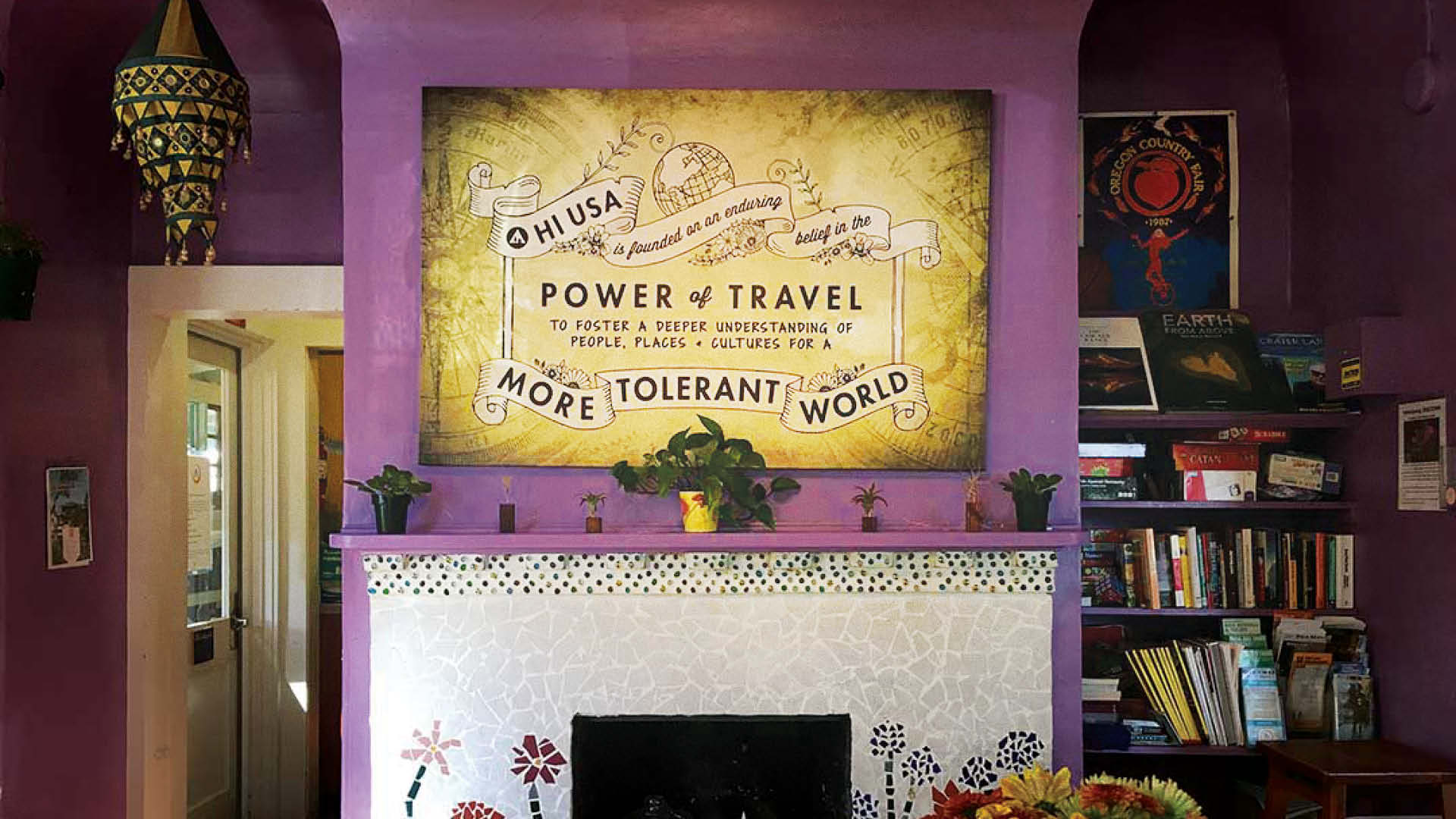
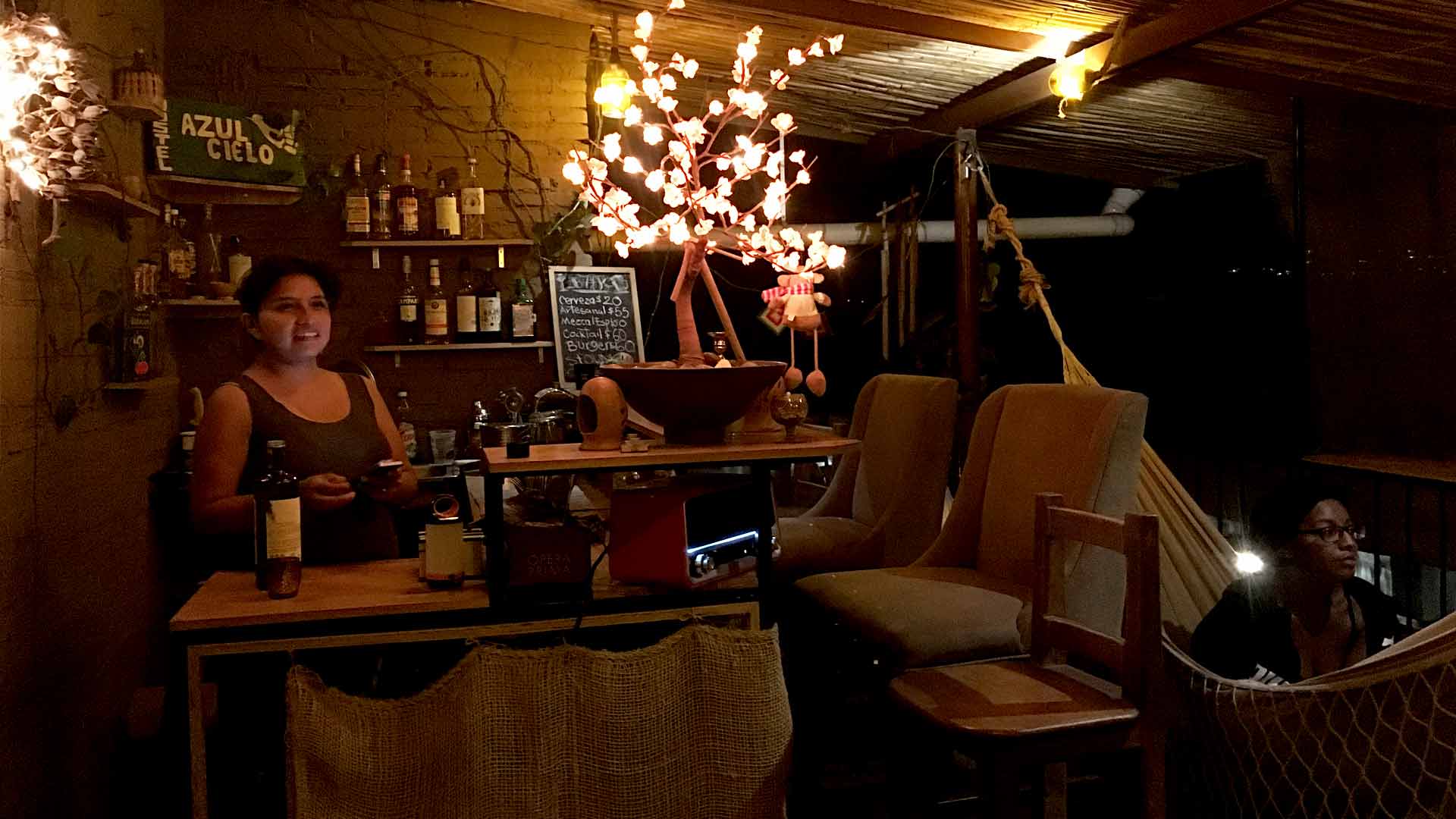
Tip 3: Stay at cheaper digs!
Hostels, airbnb, VRBO, couchsurfing, WHOOFing, etc… are truly game-changing options if you’re looking to learn how to slow travel. Staying in less-expensive, long-term accommodations also tends to have you interacting and living a little more like a local as well. And they usually cost way less than most traditional hotels or motels; usually much less than half the cost!
I stayed in an (expensive?) hostel in San Francisco for a work conference a few years back. That hostel cost me about $50 a night, but the conference hotel was well over $270 a night!? For three nights I would have spent over $800 dollars just on accommodations alone if I succumbed to peer pressure. Instead, I lucked out big time!
I actually got a three-person ensuite (that means the bathroom is in the room) hostel room, but I was the only one in there all three days. All the perks of a hostel, and the in-room privacy of a hotel! Bonus!
Yes, even when you’re not on “vacation” you can make smarter choices that extend your finances. In that instance the conference I was going to, while for my graphic design business, was still a business expense, but more importantly, an expense coming out of my pocket!
Related Articles:
Hostel Guide 101 – Answers To The Questions You’ve Been Asking!
There are Hundreds of Hostels in the USA & Other Game-Changing Hostel Facts…
Tip 4: Work while you travel…or travel while you work!
That last section brings me to this, which is definitely in that “how to become a digital nomad” skillset as well. But you don’t have to think of yourself as a bonafide digital nomad to blur the line between normal and nomad! You may not think this is something that you can pull off, or that you’re in an industry that would even allow or make this a possibility, but stick with me here for a second. If at all possible, start mixing work with pleasure.
First, you never know until you ask! If you have a boss that’s willing to have conversations, it’s a time-tested tactic by eventual nomads to start slowly “training” their boss or company on how effective they can be while not at the office. Slowly work in longer work/vacations!
Instead of taking your typical 1 week completely off, you agree to take 2 weeks but sprinkle in a week’s worth of work while you’re at it. Thus still maintaining your accessibility to your job, but being able to extend your travel!
Beyond that, you might really be surprised how many types of “typical” jobs have gone virtual or remote, especially since Covid. I have met people over the years that do the most unique things over the internet and get paid well for it. There are the easy go-to’s, like teaching your language to others through proven platforms. But there are also outside-of-the-box things like teaching yoga or other fitness-related things through the screen.
Heck, I’ve even learned how to make pickles from a video-based classroom, so that pickle-enthusiast is getting paid to teach something way off the wall that they love!
Even if this isn’t something you feel you can do now, this is one of those seeds you want to plant. What could your life look like in a year or two if you decided to make some bigger life changes to become more location independent? (Maybe check out this podcast with my friends Jason and Travis to understand all of the options. It’s literally where I started years ago!)
Related Articles:
Digital nomad, slow travel life in Queretaro, Mexico. Well, at least for 2 months
Rockstar Interview: Native Nomads Cassie & Nate — Opening Their Hearts & Minds in Mexico
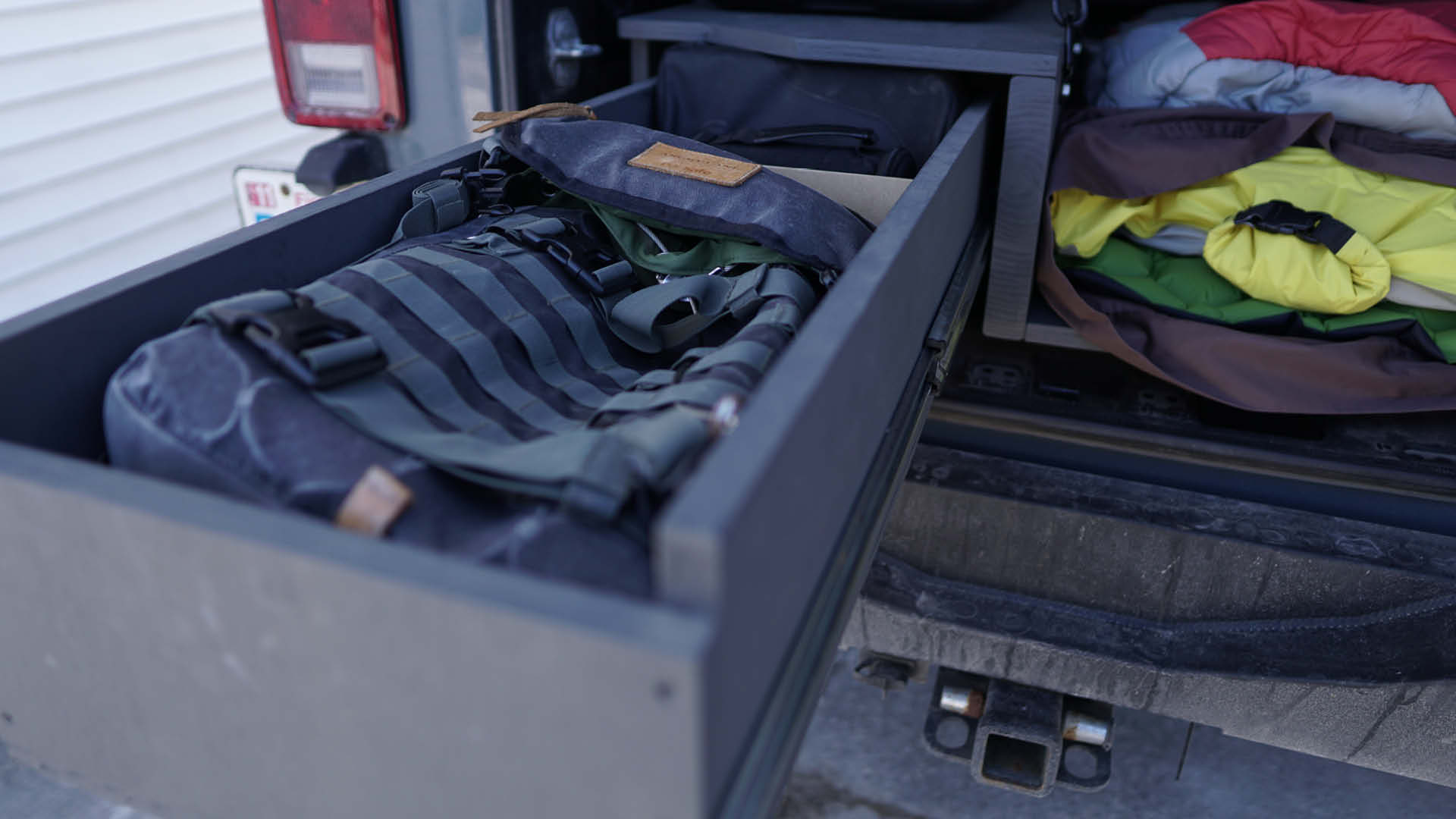
Tip 5: Get around by public transportation… or just walk!
I feel like most people that don’t come from a city with decent public transportation think that it’s unsafe or that it’s just not something they are comfortable doing. Honestly, I used to feel the same way. Public transit straight-up scared me. But I started testing the waters and doing some experiments and found that I dig a good bus or train ride! Seriously, I was so stoked I actually wrote bout it!
Most places I’ve been to, domestically or internationally, have a weekly option that is about the cost of two short Ubers. Typically between $20-30 USD for unlimited rides on public transit. That’s slow travel budgeting gold! Great cities have apps that plug you in, but in not-so-great locales, google maps is actually a really great tool for finding public transit connections or routes in general. And if you’re staying for a month, there are usually even more budget-friendly monthly passes!
Beyond that, simply walking around a new city is actually one of my favorite things to get lost doing. It’s free, and it burns off calories from all that delicious food!
Just pick a direction and start walking!
I was in Philly and literally the first thing I did was bought a weekly pass. The funny thing is that the city is so walkable, I barely used it! That said, I did use it, and by having it accessible, I was much less likely to drop $10+ on a 3-mile rideshare when the train was just as easy.
Many larger cities are even adopting great public bike or even electric scooter programs that allow you to unlock your ride at a doc or via an app. Then simply pay a buck or two to get from point A to B. Great in-between option.
Now. Some transit is a bit sketch, and you always need to be aware of your belongings, no matter if you’re in the US or abroad. But you should have a good feeling for that before you hit your destination and can make the call there. I was so paranoid when I first started traveling I invested in a very secure backpack!
Go one step further and experiment with less “normal” (read: American…) ways of grouping transit. In Mexico “colectivos” are essentially rideshares the way we think of them in the states. But you don’t hail them from an app. You might hop in a cab-styled vehicle or bus with a destination listed on the windshield. Oh, and randoms may end up packing in with you! You get a cheap fare (ask how much up front!) and everyone wins. Or take a night bus! Experiment, my friend!
The bottom line is that you should really add all of these options to your slow travel arsenal…and your comfort zone.
Then pick the best option for the city you’re visiting or even just the day of the week and your destination!
Heck, if you’ve never used public transit, just start experimenting in your home city so you can get used to the ins and outs of it before you try it in a new city the next time you travel!
Related Articles:
A Public Transportation / Transit System Done Right: Minneapolis MN, USA
“You’re thinking of going to Philly? Don’t.” … And Other Annoying Things People Say
Mexico Travel By Bus; They Will Straight-Up Leave Your Ass Behind & 8 Other Things…
Tip 6: Embrace the Freebies!
Nearly every major city in the world is chock full of free options at least one day a week. And there are tons of other cheap and free opportunities if you dig deeper. These things are slow travel budget magic.
Make sure you make friends with your hosts, whether you’re staying in a hostel, Airbnb, or otherwise, and ask them for some of the local favorites to check out on the cheap!
A short list to get you started and just thinking about the options:
- Free walking tours of the city (I always start my first day in a new city with one or two of these! Tip your tour guide!)
- Free movies or concerts in the park
- Free museum days (huge bonus in cities with a lot of museums!)
- Free music at the pub or brewery (see happy hour tip below…)
- Free (or pay what you will) yoga sessions
Yes, there are a few of these where you’ll have to battle some crowds, especially with things like museums or free concerts. My suggestion is to pick your battles and hit the slow periods of the day whenever possible. Hit that museum first thing in the morning, before the crowds, then enjoy the rest of your day taking it slow!
Staying at hostels? They are an absolutely amazing place to score some freebies!
Even more importantly, those freebies usually come with new friends from around the world and a bonafide conversation starter built into the equation! The hostels set up the whole thing, get everyone in a room or meeting place.
I’ve stayed at hostels that put together free (or hella cheap):
- Breakfast (actually, most good hostels provide free breakfast!)
- Wine and cheese nights
- Movie nights
- ghost tours
- pub or bar crawls
- brewery tours
- pool parties
- dinner parties
BTW. You’re always welcome to hit me up on Facebook or Instagram and ask about hostels. They were truly a game-changer for me in the beginning, helping to open my eyes to how inexpensive yet interesting slow travel can be. And I have tons of friends in my network that will probably chime-in to the conversation if you need more convincing!
Related Articles:
Hostel Guide 101 – Answers To The Questions You’ve Been Asking!
There are Hundreds of Hostels in the USA & Other Game-Changing Hostel Facts…
Tip 7: Be hella-flexible
Rigidity is the bane of a slow travel, budget-minded existence. Remember, we’re talking slow travel here. There’s just a different flow about things when you leave room to enjoy the moments and be flexible. Beyond the simple nature of it, there’s also a real need to be flexible to make possibly tough situations turn out alright. It gives you the time to call an audible or research a change in plan and execute.
See, if you drop $250 and walk into a crappy hotel room, you go to the counter and get another room. Heck, they might even upgrade you for your trouble.
But you still get to stay in that sterile, bleached new room all week/weekend, barely interacting with other travelers. Sorry, I clearly have a disdain for most hotels. 😉
Now, even if you do your due diligence and read the reviews and make sure you think your hostel is the bomb-diggity, you might still end up walking into a subpar joint. Then you have to jump ship to salvage your trip. Trust me, I’ve been there. Luckily with more tools in your toolbox, from accommodations to transportation, it’s easy to shift.
Add to this the fact that you’re prepared. You’ve already essentially paid for this trip, but you’re not scared to spend some cash being spontaneous or going with the flow. Your hostel may have been $20-30, but you have to upgrade to an expensive hotel for a night, then switch to some amazing Airbnb for the remainder of the trip. You’ve got this.
It’s an extra $50-100 bucks, but it’s not big deal in the big picture. You’ll feel better and assured you’re comfortable moving forward!
Being flexible also leaves you open to opportunities
Beyond the benefit of being able to adjust when things go wrong, being flexible allows you to take advantage of when things are going right! Taking a one-way ticket leaves you open to where you might go next. Not scheduling your accommodations ahead of time might have you meeting friends and getting a better, cheaper place together.
Related Articles:
Budget Travel Gone Bad…
The Learn To Travel Series: A Brief Apology to Fear
Tip 8: Don’t overplan!
You know something that kills a good vacation or leisure travel? That “I need a vacation from my vacation” feeling when you return from a trip where you’ve done nothing but go go go, sunup to sundown, and blistered your feet from running here and there to “get everything in.” Everything about this is the opposite of a slow travel mentality as well as goes completely against the way a digital nomad tends to roll!
Here’s the thing: You’re never going to get everything in…so stop trying!
Pick and choose where you’re going to spend your time, and add time for reflection or just stopping to smell the roses. Create a top ten list of what you want to do at a destination, then cut it in half! Don’t force yourself to take advantage of a free opportunity just because it’s free. Only choose to do it if it really fits what you want to do.
On the flip side of that, look strongly at reviews for what might typically be referred to as the “tourist traps” at your destination. Realize that dropping mad coin and fighting crowds to get to the top of the Eiffel Tower may not be nearly as magical as it is in the movies. But taking a couple of hours and planning an evening bite at a quaint restaurant or cafe where you can watch the light show at your own pace could be!
Related Articles:
Analysis Paralysis? Rigid Plans Are Overrated—BackUp Plans For The Win!
Tip 9: Buy groceries!
This is a time-tested money saver for budget travel ninjas and digital nomads all over the world. If you’ve never thought of buying groceries as something you should need to do when you’re on “vacation”, that’s OK. It’s an experiment!
If you’re using some alternative accommodations like Hostels or Airbnb, or even couchsurfing, you almost always have access to a place to not only store your food but prepare it.
One of the first things I do when I get to an extended stay is go to the local small grocery or market!
I always stock up on normal stuff. But if it’s a place that has specific delicacies or cuisine, I take the opportunity to buy unique foods from the region that I can prepare myself (or with flatmates or hostel mates…). This is a huge win-win because you’re saving money, getting some great food, and likely eating a bit healthier because you’re controlling the menu. I love eating out, but let’s be honest, even the healthiest options tend to be gluttonous or simply larger than needed!
For me, the reality of Type 1 Diabetes requires me to be even more wicked conscious about what I’m eating. Buying fresh, whole foods at the market or grocery is a no brainer!
Related Articles:
I just got diagnosed with Diabetes and I’m FREAKING OUT!
Tip 10: Two words…Happy Hour!
Seriously friend. There’s absolutely no shame in using happy hour for what it’s meant for—eating and drinking cheap! Most joints have happy hours during the week, somewhere between the hours of 3-7 pm. If you’re smart about how you’re doing your meals during the day, you’re eating 1-2 home-cooked, money-saving meals. You can then splurge on an awesome happy hour which can easily fill your belly and get that beer fix. This could actually be your dinner, or just a late day pit stop. If the latter, then you get to get a bit crazy for a good local dinner that evening!
My modus operandi is typically to work in the morning when I’m most productive. Hostels almost always have a free breakfast in the mornings, so I get my coffee and food, meet some folks, and get 3-5 hours of work done at my peak time. Then I hit the pavement and explore for hours. I’ll snack on street food, but mostly working up a great appetite for when happy hour starts!
The key is to know where the happy hours are! Again, make friends with all the people working where you’re staying; they’re you’re lifeline to the city!
Just ask everyone you meet where the cool…and cheap…happy hours are! Also make sure you’re popping your head into any cool looking places while you’re out exploring each day. Pop a pin in whatever map app you use (check out this article), then plan to circle back at happy hour!
And for optimal digital nomad productivity, I often have my computer with me and get in some work or check emails while out exploring. I’ll often grab a coffee early, then a couple of cheap happy hour beers and some eats midday. Maybe get some writing in, then hit the road recharged for some more evening or sunset exploring!
Related Articles:
How To Use Google Maps Saved Lists to Fuel Your Travel Planning & Wanderlust
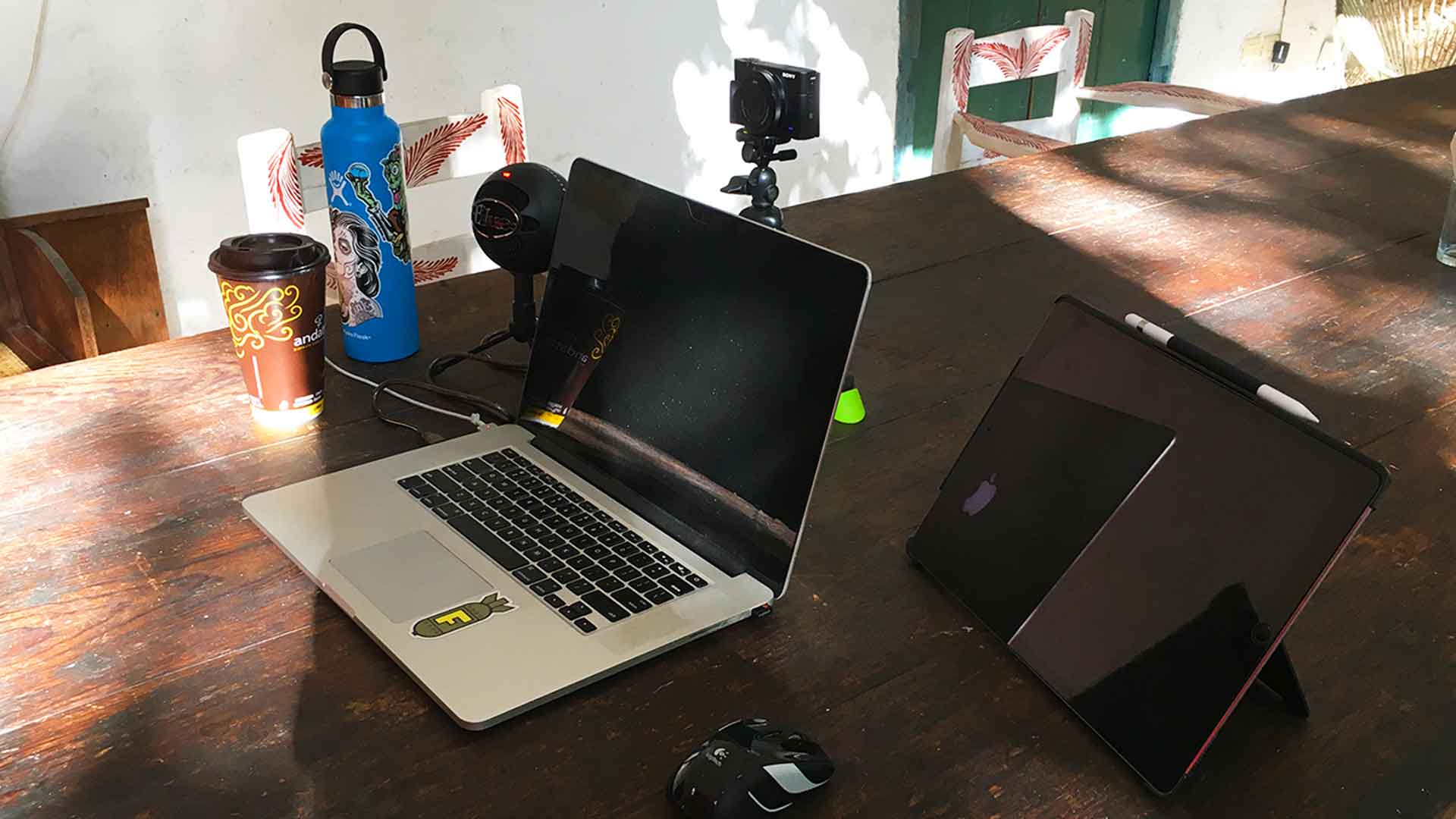
Tip 11: Water bottles, food trucks & street food
That first the easy one. I literally pack a 32oz Hydroflask or foldable water bottle that goes on each and every trip with me. I constantly refill them with water after I pass security, at my accommodations, or at water fountains along the way. And it helps keep the ol’ urine nice and crystal clear, even after a crazy night or two of da beers.
If you’re the type of person that buys bottled water or sodas, I highly suggest you change your game and start doing this for your own, the environment’s, and your pocket book’s sake.
Budget travel gold: Food trucks & street food
I kid you not friend, food trucks and street food are one of the best-kept secrets for slow travelers and digital nomads. Actually one of the absolute best meals of the past ten years of my life was at a food truck in Bend, Oregon. This truck was less than 6’x10 in size, and it just happened to be vegan. I’m not trying to convert you; I’m not even vegan.
I’m just trying to point out that you can find the most unlikely of budget-friendly, amazing experiences where you least likely expect them! In case you’re interested, it is called “A Broken Angel” sustainable food cart.
Some of the most expensive larger U.S. cities (Austin, Texas, I’m talking to you…) still have an amazing and very budget-friendly food truck scene. You can easily get hella stuffed for less than $10. And if you’re in the right part of the country, two words: Taco Tuesday. I’ve found great street tacos in the US for around $2 a piece, and you only need 2-3 tops to fill the ol’ belly.
What’s the difference between a food truck and street food?
Go one step further and realize that, when you’re in many countries across the world, “street food” is essentially the international version of the U.S. food truck. Yes, you might have to use your experimenting skills to the fullest here, but you might surprise yourself and your tastebuds! For some reason, a lot of people are overly concerned that trucks or street food is “safe” in other countries, but if you just use common sense, you’ll likely not run into too much trouble.
Some of the best meals I’ve had were from very unassuming street vendors sitting on the sidewalk in Mexico. I paid less than $3.00 US for two soft tacos “gracefully” hand-assembled by two lovely old Oaxaca women, direct from their tupperwares.
The food was cheap, and the Mexican gentleman sitting with the women that helped me translate and communicate with them was unforgettable. He talked about his one trip to the U.S. and how he would love to make it back.
An unassuming situation that led to an etched memory of the man, the two little old ladies, and that beautiful, empty Mexican street at dusk. All for less than $3.00.

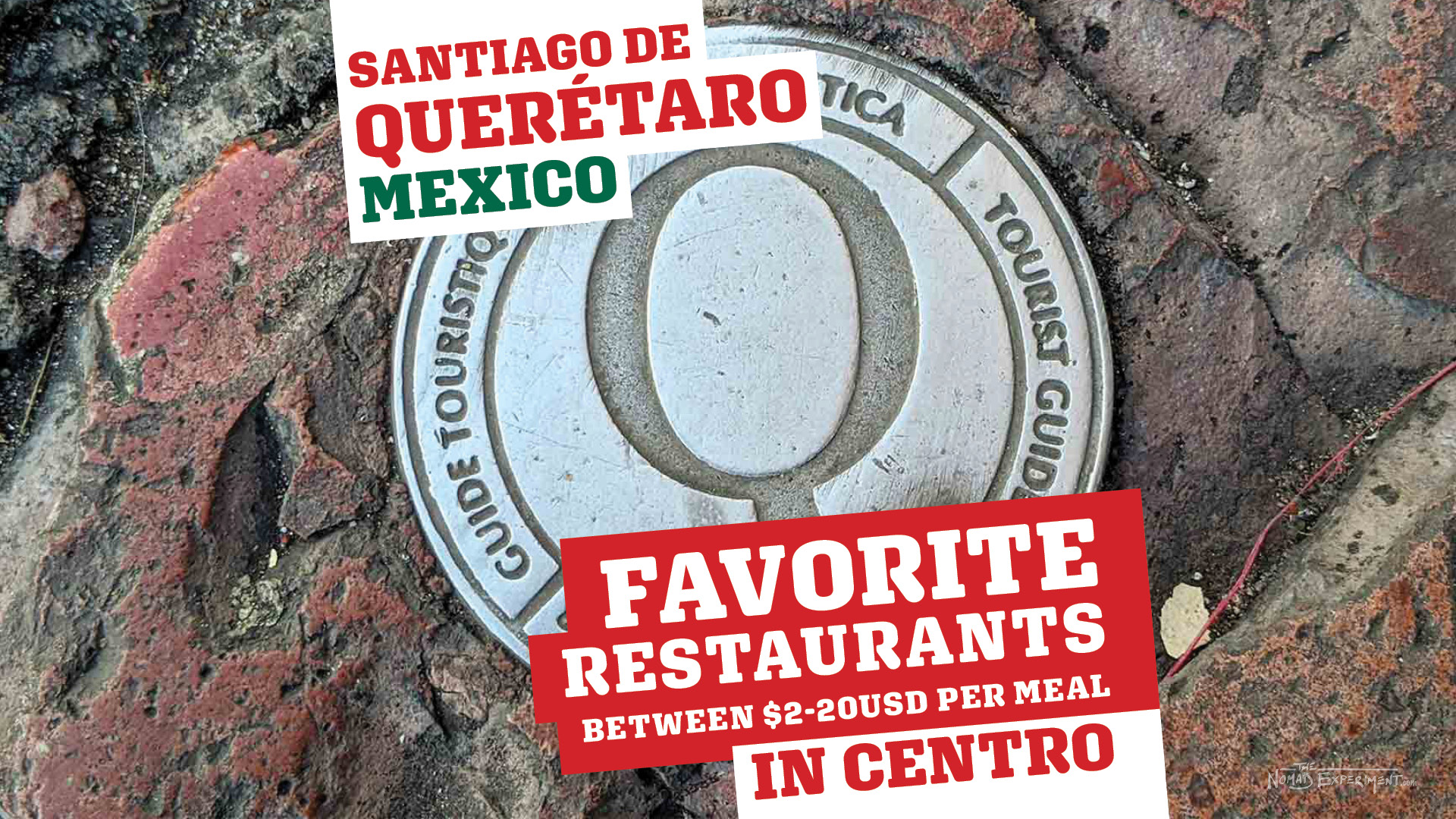
Tip 12: Pay for your trip early!
This is an awesome cycle to get into and it’s really a game-changer for keeping the money stress gremlins away when you hit the road. The key is to pay for the majority of your trip well before you go, and have your spending money set aside before you even take off.
This might seem self-explanatory, but let me drop some knowledge.
First, don’t spend money you don’t have. Sorry, not sorry. Second, hopefully you’re purchasing that plane ticket on a rewards credit card (so you can get free miles and flip, of course…more on that in the next tip) and immediately paying it off before you accrue interest. Do that weeks or months ahead of time.
Then you’re securing some form of lodging, at least for your first few nights of the trip. Even if you’re just putting down a deposit, you know what the final spend will be. From there, it’s pretty simple to get your numbers down for food, entertainment, and transportation.
Save that money ahead of your trip and have it in the bank!
No, you’re not actually going to use that money yet, since you’re still working the credit card miles. But you’ll have that money ready to immediately pay off your credit card spend the minute you get back.
That stress free feeling of knowing that the majority of your trip is paid for when you hit the ground running is liberating. And it will actually help you feel better about splurging and being spontaneous while you’re there.
If you’re stressed and strapped, you might not go on that amazing bungee jumping excursion or decide to hit that Mezcal tasting in the home of Mezcal, Oaxaca. But if you know you’re covered, dropping an extra chunk of change on being spontaneous is rewarding! And it’s almost required as a celebration of how you’re slaying it!
Protip bonus is that when you get really good at this, you might get to the point where you have your next two or three plane flights and trips paid for well in advance! There’s something truly beautiful about knowing that you have something on the docket and to look forward to and that it’s already pretty much paid for! And bravo to you for when you finally get to that point, because you’re steps ahead in the digital nomad, slow travel game!
Related Articles:
Mexico: Murals & Street Art of Oaxaca – A Baker’s Dozen of Badass #04
Tip 13: Travel hacking & rewards programs
I specifically left this towards the bottom of the list because it’s a slippery slope. Rule number one is to not have ongoing consumer debt if you’re getting into travel hacking.
Seriously. If you think you’re slaying the points game but still paying interest…on anything…then in my opinion you’re fooling yourself and getting the cart in front of the horse. But I digress.
I spend very conservative amounts of money each year. Yet simply by using my go-to travel rewards credit cards I end up with enough points for 2+ roundtrip flights to Europe. That’s many more domestic flights if I wanted to go that route. I won’t dig into the details here, but the articles linked below can help you more with travel hacking!
The fun thing about travel hacking is that it really does get to be kind of a fun mental game to learn how to maximize your freebies!
Related Articles:
Travel Hacking 101 (for beginners)
I Just Got TWO Roundtrip Flights For About $22
My Checked Bag Just Cost Me $2400.00
Parting thoughts on learning how to slow travel or becoming a digital nomad
Looking back, this is a lot of information! It may also seem like this is a massive personal thought shift or life makeover. But please, please, please, do what you can to not get that mindset!
Deciding to sell all my things and go full-on digital nomad took over 4 years of consistent personal growth and experimentation for me! But that’s my path, not yours!
Take your time and do what is just uncomfortable enough to make you grow, and keep doing more. At any point, change your course, or hell, quit altogether and go back to your default life. This is your show. You can do it in as much or as little time as you want!
Good luck! As always, I appreciate it if you share this article or link to it!
Cheers!
— Jason
Travel Planning Tips
Figure out where you are going & how are you getting there…
I suggest using at least 2 to 3 different travel search sites. Start with Skyscanner or Orbitz or Booking …or whatever aggregator site you prefer. Then when you see what airlines to use, check their respective sites for better deals or rewards flights.
Figure out where you’re going to stay…
If you’re interested in hostels, search Hostelworld or Hostelling International. For longer-term or more private digs, look at Airbnb, VRBO, or you can look for hotel rooms in the links from the search engines listed above.
Get comprehensive travel insurance, or in the least, travel medical insurance if internationally…
Especially with Covid not going anywhere, get covered. Start with an insurance aggregator like Insure My Trip, or with SafetyWing, World Nomads, or another. Then decide what is important to you; trip cancellation, baggage coverage, medical, or all of the above. And get a yearly evacuation plan, since you’ll have to get home after your emergency!
Need more resources? Click here!
This site participates in the Amazon Services LLC Associates Program and other affiliate programs and may earn from qualifying purchases. You’re never charged more, but it helps out little by little! Check out “Privacy” in the top menu if you need to know more!


